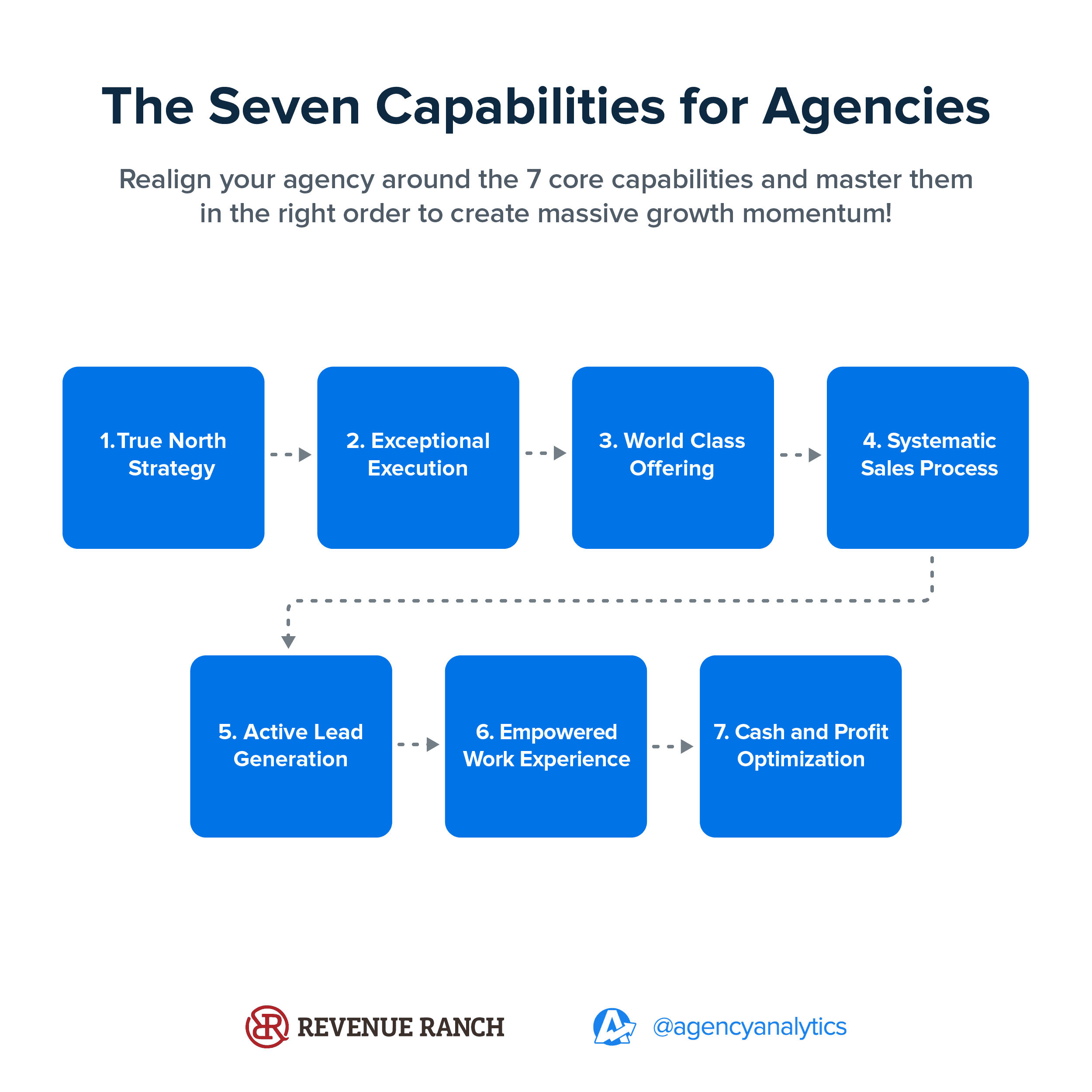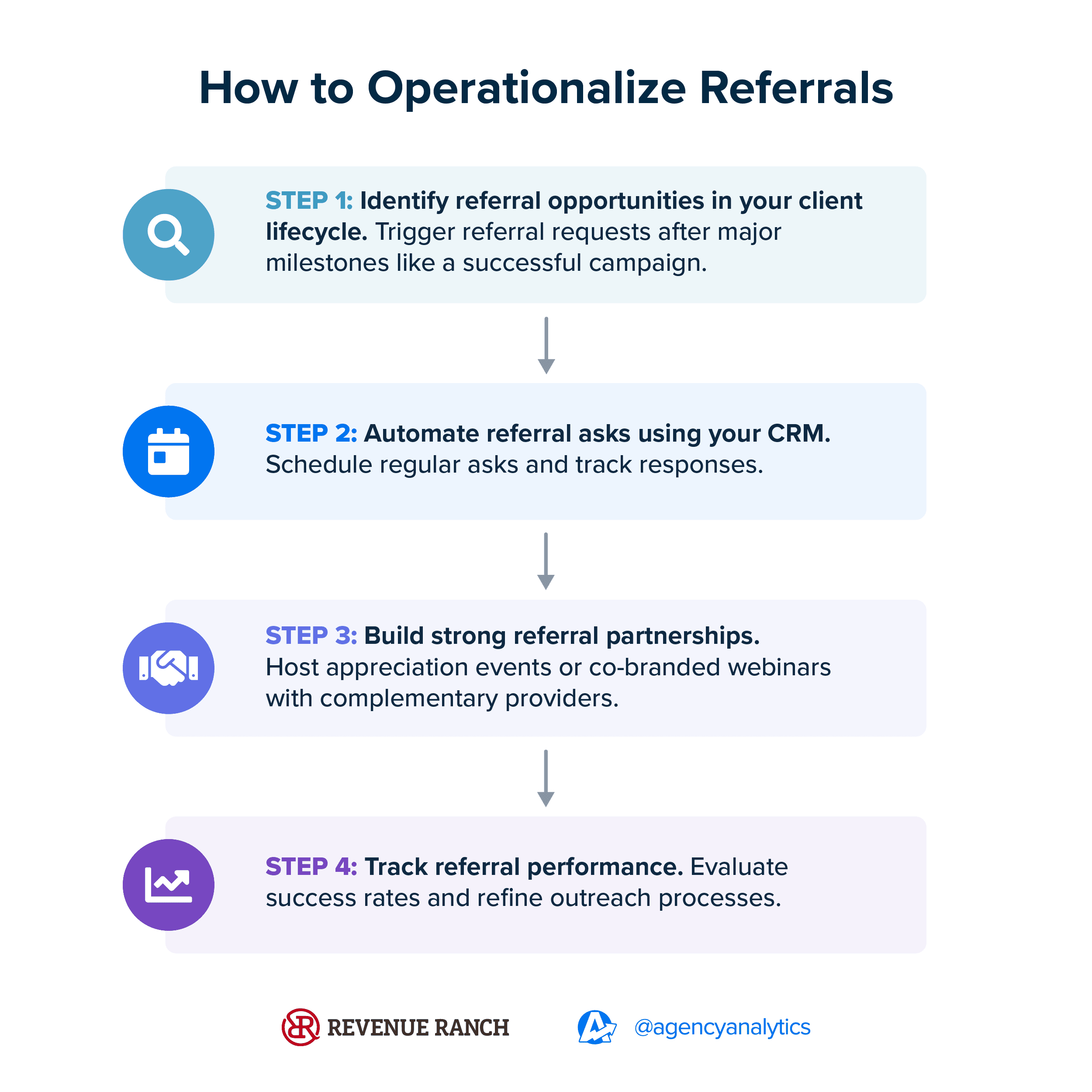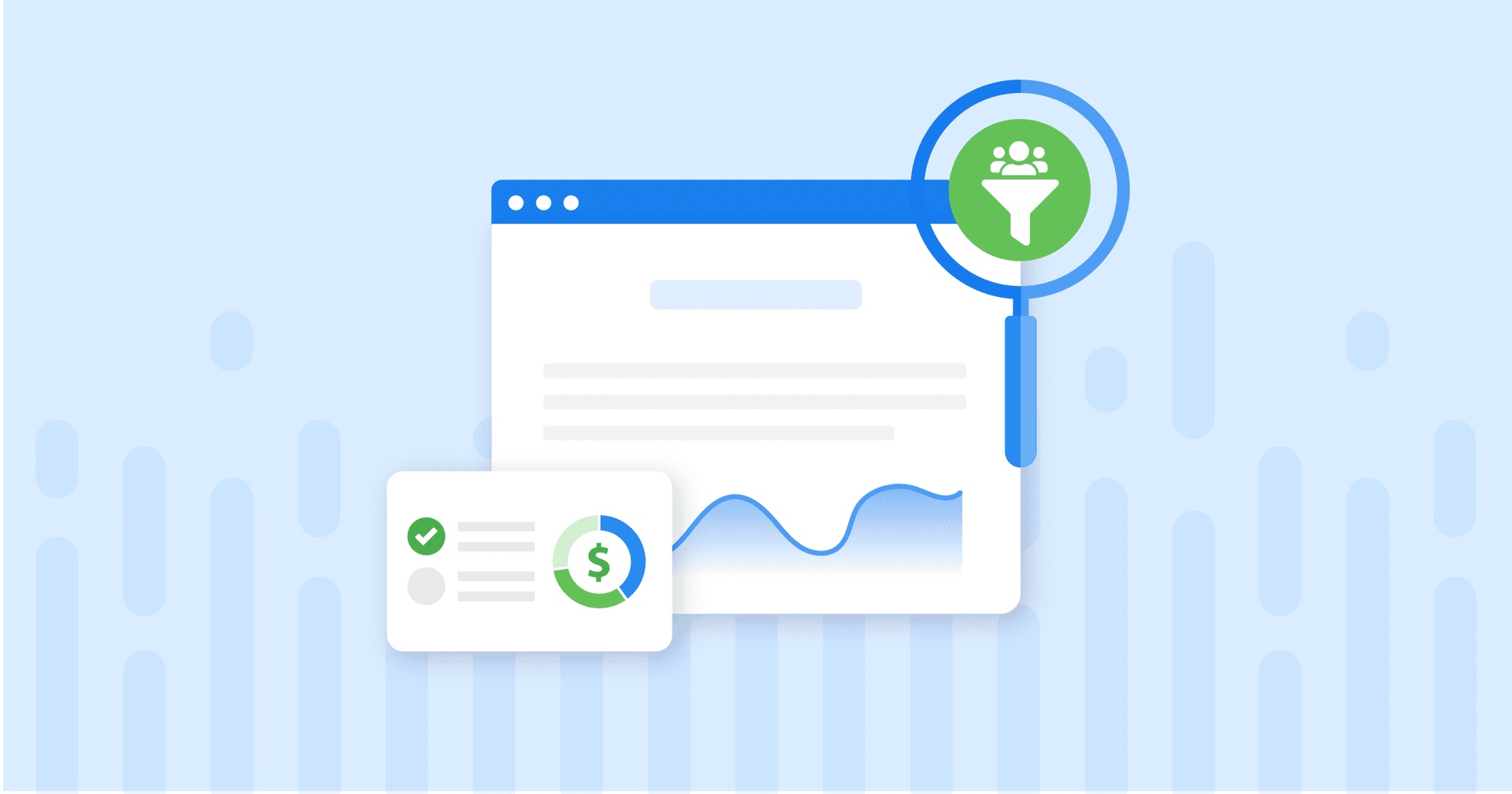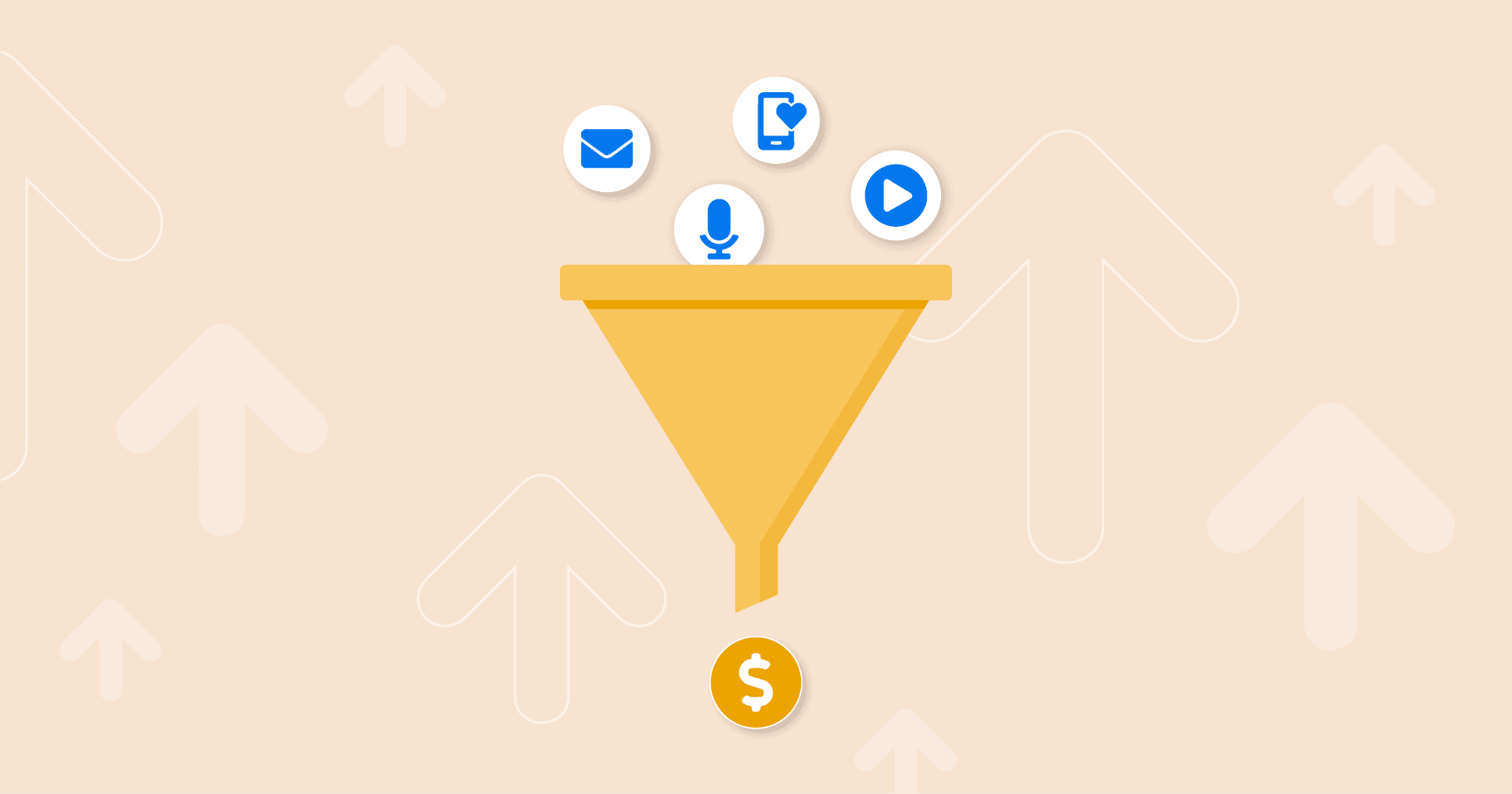Table of Contents
Table of Contents
- Aligning Lead Generation With Your True North Strategy
- The Key Pillars of Active Lead Generation
- Outbound Lead Generation Strategies Should Be a Priority
- Create a Network Primed for Referrals and Partnerships
- Integrate Inbound Marketing Into the Mix
- 5 Common Lead Gen Challenges and Course Corrections
- Aligning Lead Generation Efforts for Long-Term Success
7,000+ agencies have ditched manual reports. You can too.
Free 14-Day TrialQUICK SUMMARY:
Struggling to build a consistent lead generation pipeline? Frank Cowell explains how to master the art of Active Lead Generation with proven strategies like outbound marketing, value-driven events, and referral partnerships. By aligning with your core purpose and committing to long-term efforts, you’ll turn lead gen into a growth engine for your agency.
When it comes to growing a successful agency, lead generation often feels like the holy grail. Everyone wants as many prospective clients as possible, but getting lead generation right requires more than just running ads or sending cold emails.
If done well, lead generation can transform an agency’s pipeline into a consistent engine for growth. However, you can’t focus on just any “lead.” You must focus on Active Lead Generation. By “active,” we mean the leads “raising their hands” and ready to engage.
According to Frank Cowell, founder of Revenue Ranch and creator of the Seven Capabilities Framework, Active Lead Generation is one of the three critical components of an agency’s “revenue engine,” alongside a World-Class Offering and a Systematic Sales Process.
But there’s a catch: You can’t effectively generate leads without first nailing those other two components.
Marketing, which is where you would bucket lead gen under, is for scaling things that are already working. That’s why it’s third in revenue engine optimization.
Frank Cowell, Founder, Revenue Ranch
This means that without a refined offering and a solid sales framework, lead generation efforts are often wasted.
Let’s dive into how agencies can master active lead generation, align it with their business goals, and transform it into a consistent, scalable process. Following the Seven Capabilities Framework, we’ll explore specific, actionable strategies designed to help agencies overcome common lead generation challenges.
Aligning Lead Generation With Your True North Strategy
Effective lead generation doesn’t begin with campaigns, tools, or tactics—it starts with clarity. According to Frank, every agency needs a clearly defined True North Strategy to guide its lead generation activities. For lead generation activities to work, specificity is non-negotiable.
The reason most agencies are not effective with their lead generation activities is that it’s not directed and guided by their True North. The activities are too broad, they’re too generic, and they are not hyper-focused on solving a specific problem for a specific audience.
Frank Cowell, Founder, Revenue Ranch
Without a True North, agencies risk falling into the trap of generic messaging that gets lost in a sea of noise.
To cut through that noise, agencies must align their lead generation efforts with a well-defined target audience, address a specific pain point, and offer a clear outcome.
For example, an SEO-focused agency might frame its True North around helping small ecommerce brands increase organic traffic by 25% in six months. This level of specificity ensures that all lead generation activities—from outbound outreach to content creation—resonate deeply with their intended audience.
Frank also stresses the importance of building this foundation before diving into tactical execution.
If you haven’t done that, start there. That specificity must drive, at minimum, your lead generation activities.
Frank Cowell, Founder, Revenue Ranch

The Key Pillars of Active Lead Generation
With your True North defined and a World-Class Offering and Systematic Sales Process in place, you can build a consistent, high-volume, and iterative lead generation strategy.
You have to pick an activity and commit to doing that activity at a high volume, relentlessly, week in and week out.
Frank Cowell, Founder, Revenue Ranch
Frank explains that the most common mistake agencies make is abandoning tactics too quickly. After one or two underwhelming attempts, many declare a strategy ineffective and either pivot to a new idea or stop their lead-gen efforts altogether, which results in wasted effort and inconsistent pipelines.
Instead, Frank advocates for long-term commitment. He advises picking a single activity and running it for at least 90 days before making any adjustments. This will allow time to collect meaningful data and insights and make informed changes.
Sustained lead generation requires either a time or monetary investment. For founders at smaller agencies, this often means rolling up their sleeves and doing the outreach themselves.
If you’re not going to spend the money, then you’re going to invest the time. You just have to pick one. But it can be done with a very, very little budget—you’re gonna replace money with time.
Frank Cowell, Founder, Revenue Ranch
Outbound Lead Generation Strategies Should Be a Priority
Outbound lead generation is often the fastest way for agencies to start filling their pipeline. Rather than waiting for leads to come to you, outbound strategies allow you to reach out to your ideal prospects proactively.
Frank frames this approach as essential, especially for smaller agencies.
Outbound is going to be more important than your other activities. Most firms don’t need hundreds of new clients per month—they need four, for example. For many agencies, four new clients per month would probably crush sales targets.
Frank Cowell, Founder, Revenue Ranch
Build a "List of 500"
Frank introduces the concept of the “List of 500,” which focuses on identifying a targeted pool of potential clients that align with your agency’s True North and core offering.
“These 500, you want to become their friends. You want to become known to them,” Frank explains.
But the key isn’t making an immediate sales pitch. Instead, the first outreach should offer value, such as an invitation to an educational event or an opportunity to collaborate.
If we just lead with a “Get on the phone with me” offer the first time they hear of us, we stand to burn that list.
Frank Cowell, Founder, Revenue Ranch
Host Value-Driven Events
Events are a powerful way to establish authority while providing genuine value to prospects. Hosting webinars, panel discussions, or lunch-and-learns can position your agency as a thought leader. Frank recommends framing these events around the audience’s pain points and aligning them with your True North.
For example, an event for ecommerce brands could focus on “5 Ways to Increase ROI on Google Ads,” with actionable takeaways that directly address your target audience’s challenges.
At the end of the event, Frank suggests offering a next step: “99% of the content is pure education, value-driven, and then at the end is an offer to carry that discussion forward.” This call to action could be something like a free consultation, an audit, or a strategy session—each naturally tied to the event’s content.
Operationalize the Follow-Up
No outbound strategy is complete without a robust follow-up process. Frank stresses the importance of thinking about follow-ups not as a sales tactic but as customer care.
The lens we should take is customer service. For example, when people download a lead magnet, a sales development rep should email, connect on LinkedIn, and call them personally to check-in to make sure they received what they requested, and see if there is something more you can provide to address their initial need.
Frank Cowell, Founder, Revenue Ranch
This approach ensures that prospects feel valued and supported, even if they don’t immediately convert. Follow-ups can take many forms—emails, LinkedIn messages, phone calls, or even direct mail—but the key is consistency and a personal touch.
Create a Network Primed for Referrals and Partnerships
Referrals and partnerships are powerful tools for active lead generation. However, while many agencies rely on word of mouth to bring in new business, few operationalize the process to ensure it delivers consistent results.
Referrals kind of just come when they come, which is a terrible way to rely on a source to fill your pipeline.
Frank Cowell, Founder, Revenue Ranch
Incorporate the Referral Process Into Your Existing Relationships
Agencies should approach referrals as a strategic activity rather than a passive occurrence. This means actively building referral requests into your client relationships as a structured and repeatable process.
Frank suggests embedding these asks directly into your CRM system to ensure they’re carried out during specific points in the client journey.
Do you have it as a scheduled ask in your CRM to ask for a referral at specific points in the relationship?
Frank Cowell, Founder, Revenue Ranch
For instance, agencies should schedule referral requests after a major milestone, such as the completion of a successful project or a campaign that has delivered measurable results. This timing ensures clients are in a positive frame of mind when asked to recommend your agency.
Adding incentives to your referral program will further enhance its effectiveness. While some clients may refer your agency without a prompt, offering perks like discounts on future services, gift cards, or exclusive access to premium content will create additional motivation.
However, incentives should feel appropriate and not detract from the relationship—sometimes, a simple acknowledgment of appreciation can go a long way.

Build Strategic Partnerships With Complementary Businesses
While client referrals are powerful, partnerships with complementary service providers can generate consistent and scalable leads.
Do you have a list of partners that you regularly wine, dine, and nurture? Are you reminding them of what you can do for them and their clients?
Frank Cowell, Founder, Revenue Ranch
Strategic partnerships work best when they fill gaps in your services. For example, a PPC-focused agency might collaborate with branding agencies or web developers to create a more comprehensive service offering for shared clients. By leveraging each other’s strengths, both partners benefit from mutual referrals and access to a wider pool of prospects.
Nurturing these partnerships requires regular communication. This can include quarterly meetings to discuss client needs, co-hosted webinars or workshops, and sharing leads with your partners as a sign of goodwill.
Invite Referrals and Partners to Events or Speaking Engagements
One highly effective way to engage clients and partners is to invite them to events that showcase your agency’s expertise and create opportunities for deeper collaboration.
Hosting exclusive events like roundtables, workshops, or industry panel discussions allows you to position your agency as a thought leader.
For example, a digital marketing agency might organize a webinar discussing upcoming trends in paid media or a Q&A session on maximizing ROI in social campaigns. Such events provide value to attendees and create opportunities for networking and referrals.
Speaking is really powerful because it positions you as an authority, and you can provide a soft call to action at the end that is naturally tied to the content—you will find that the leads you get from this activity are highly qualified.
Frank Cowell, Founder, Revenue Ranch
Even informal gatherings, like client appreciation lunches or virtual happy hours, strengthen relationships with both clients and partners. These settings encourage open communication and demonstrate your agency’s commitment to fostering long-term connections.
In addition, events provide an excellent platform to showcase your agency’s success stories. Sharing case studies or inviting a satisfied client to co-present will boost credibility and inspire attendees to refer your services.
By consistently hosting events and keeping your network engaged, you create a referral ecosystem where your clients and partners naturally advocate for your agency.
Integrate Inbound Marketing Into the Mix
While outbound strategies and speaking engagements bring your agency directly to potential clients, inbound marketing focuses on drawing them in organically through valuable content.
Inbound marketing allows you to scale lead-generation efforts, build long-term trust, and reach a wider audience.
The Role of Content in Inbound Marketing
Content is the cornerstone of any effective inbound strategy. It serves to educate, inform, and demonstrate your agency’s expertise in solving specific challenges. Content formats might include blog posts, white papers, videos, or case studies—whatever resonates best with your target audience.
Frank advises leveraging content created for other purposes to expand your reach.
If you’re already running webinars and lunch and learns, then you’ll have at least that content to promote for the inbound traffic.
Frank Cowell, Founder, Revenue Ranch
For example, a recorded webinar on “Top Trends in PPC Advertising” could be repurposed as a blog post, shared as snippets on social media, or even used in a paid ad campaign to drive traffic to your site.
Combining Organic and Paid Efforts
A successful inbound strategy blends organic efforts with paid promotion. Organic channels—like SEO-optimized blog posts, social media posts, and email newsletters—help establish a consistent online presence.
At the same time, paid efforts like sponsored social media ads, Google Ads, or native advertising can amplify your content’s visibility.
You can post that content on social platforms and other platforms and advertise it and put some money behind it.
Frank Cowell, Founder, Revenue Ranch
For instance, a paid LinkedIn campaign promoting your white paper on “Improving Client Reporting” could attract decision-makers actively seeking solutions in that area.
Why Website Optimization Matters
Your website is a critical hub for inbound marketing. A well-optimized website ensures that potential clients who find your content through organic or paid channels can seamlessly learn more about your agency and take the next step.
Key elements of website optimization include:
Clear CTAs: Ensure every page includes actionable steps, such as “Schedule a Consultation” or “Download Our Free Guide.”
Landing Pages: Use dedicated landing pages to host downloadable resources or event registrations, capturing lead information in the process.
Fast Load Times and Mobile Optimization: A slow or poorly formatted website will deter potential leads, even if your content is exceptional.
Building a Sustainable Inbound Ecosystem
Inbound marketing is a long-term strategy that compounds over time. Frank stresses the importance of consistency: “You create an audition opportunity. And if you work it consistently, you’ll start to see momentum.”
By regularly publishing content, monitoring performance, and iterating based on what works, your agency will develop an inbound marketing ecosystem that consistently attracts and nurtures leads.
5 Common Lead Gen Challenges and Course Corrections
Active lead generation is not without its hurdles. Many agencies struggle to gain traction and question the effectiveness of their chosen strategies.
It’s often not the activity that’s a problem—it’s the content within the activity that’s the problem.
Frank Cowell, Founder, Revenue Ranch
1. Misaligned Messaging
One of the most common challenges agencies face is a lack of resonance with their target audience. This often stems from misaligned messaging—content that doesn’t address a prospect’s specific pain points or desired outcomes.
For example, an agency targeting ecommerce brands might struggle if their messaging focuses on vague benefits like “improving ROI” instead of actionable outcomes like “boosting holiday season sales by 20%.” Refining your content to focus on specific, measurable results will make your lead generation efforts far more effective.
2. Shiny Object Syndrome
Another challenge is the tendency to switch tactics prematurely. Agencies often abandon strategies after one or two attempts without giving them enough time to show results.
The key is to commit to a chosen activity and focus on incremental improvements rather than constantly chasing the “next big thing.” Agencies should also avoid spreading themselves too thin across multiple tactics.
Pick two or three activities and just work the hell out of those things.
Frank Cowell, Founder, Revenue Ranch
3. Neglecting True North
When lead generation efforts fail to deliver, it’s often a sign that the agency’s foundational strategy—its True North—isn’t fully validated.
If you notice a pattern, the common denominator is the content. This is not to be confused with content on a page, but the conceptual content within those things is the problem.
Frank Cowell, Founder, Revenue Ranch
True North acts as the guiding principle for your lead generation activities, ensuring that everything you do aligns with the audience you serve, the problems you solve, and the outcomes you deliver. Without this alignment, even the best tactics will fall flat.
4. Failing To Solve Expensive Problems
Agencies may also struggle if they’re targeting the wrong problems. Frank shares a personal story about building a content management system (CMS) early in his career, which he tried to sell to local mom-and-pop businesses.
I was selling a Ferrari to someone who didn’t even know what a Ferrari was. The value proposition wasn’t there.
Frank Cowell, Founder, Revenue Ranch
The lesson here is that agencies must solve problems their target audience recognizes as urgent and worth investing in. This makes your services more appealing and ensures that your messaging connects on a deeper level.
5. Treating Lead Gen as a Quick Fix
Finally, many agencies mistakenly treat lead generation as a short-term solution to revenue challenges. Frank likens it to getting in shape: “When you commit to going to the ‘gym of lead gen,’ you better be prepared for this to become a lifestyle. This is not something that is going to get fixed in 90 days.”
Agencies must adopt a long-term mindset, viewing lead generation as an ongoing process that requires consistent effort, refinement, and patience.
Aligning Lead Generation Efforts for Long-Term Success
Mastering active lead generation isn’t just about running campaigns or adopting the latest tools. It’s about building a strategic, sustainable process rooted in specificity, consistency, and alignment with your agency’s True North.
Focus, consistency, and volume—that’s how you generate a raging fire. Focus first. Consistency second. Volume third.
Frank Cowell, Founder, Revenue Ranch
From outbound strategies like the “List of 500” to inbound content marketing and referral partnerships, the most successful approaches share a common theme: They’re targeted, intentional, and iterative. They’re about solving expensive problems for your audience and presenting solutions that resonate deeply with their challenges.
By aligning every effort with your True North, focusing on high-impact activities, and nurturing prospects over time, your agency will build a robust pipeline that supports sustainable growth.
Remember: Active lead generation isn’t just about getting more leads—it’s about creating meaningful relationships that turn into long-term success for your agency and your clients.

Written by
Francois Marchand brings more than 20 years of experience in marketing, journalism, and content production. His goal is to equip agency leaders with innovative strategies and actionable advice to succeed in digital marketing, SaaS, and ecommerce.
Read more posts by Francois MarchandSee how 7,000+ marketing agencies help clients win
Free 14-day trial. No credit card required.






